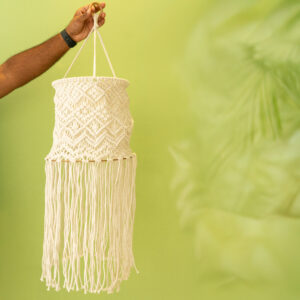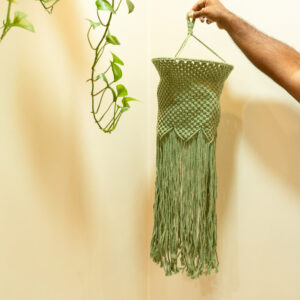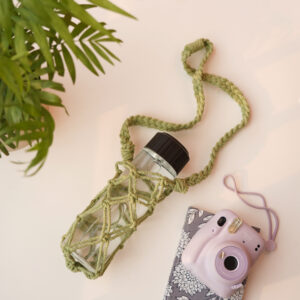Boredom of sailors. That’s what gave rise to one of today’s boldest fashion statements.

Macramé resurgence in the 70s
What is the skill a sailor already possesses? How can he use that skill to pass time and make some money? Put those two questions together and you have your answer: tying knots, and making products to sell at his ports of call. And macramé was born (spread, but born sounds better).
The name “macramé” is believed to derive either from the Arabic word migramah, meaning ornamental fringe, or from the Turkish word makrama, meaning towel or napkin.
The technique travelled to Europe after sailors introduced the same, now with complex knots creating beautiful pieces of art and products like belts and hammocks. As with many styles of arts and craft, macramé found its way to India, where local artisans incorporated many new styles, knots and techniques and into their craft as well.
Meanwhile, in Medieval Europe, courts and homes found macramé to be a bold aesthetic and it adorned their homes and clothes.
In the 1960s and 70s, macramé found a resurgence in America as a symbol of resistance to mass production, eventually fading out.
Today, in a sort of second (third) resurgence, macramé has taken the world by storm, greatly supported by the social media revolution.
With low start-up and material costs, macramé is now emerging as a popular craft for livelihood projects. With women’s creativity and industry, this craft is used to create several unique and interesting pieces.
Club Artizen’s partner project does not just craft handmade products, it also helps the artisans—women from Mumbai’s slums—get a dignified space in their household. Check out Club Artizen’s handmade macramé products!
Our Macrame Products
-

Macrame White Chandelier
₹2,950 -

Macrame Green Chandelier
₹2,950 -
Sale!

Car Hanging and Diffuser Oil – Brown / Cream
Original price was: ₹750.₹650Current price is: ₹650. -
Sale!

Car Hanging and Diffuser Oil Combo
Original price was: ₹750.₹600Current price is: ₹600. -

Macrame Plant Hanger/ Holder – Pink
₹575 -
Sale!

Macramé Bottle Sling Holder
Original price was: ₹675.₹600Current price is: ₹600.


